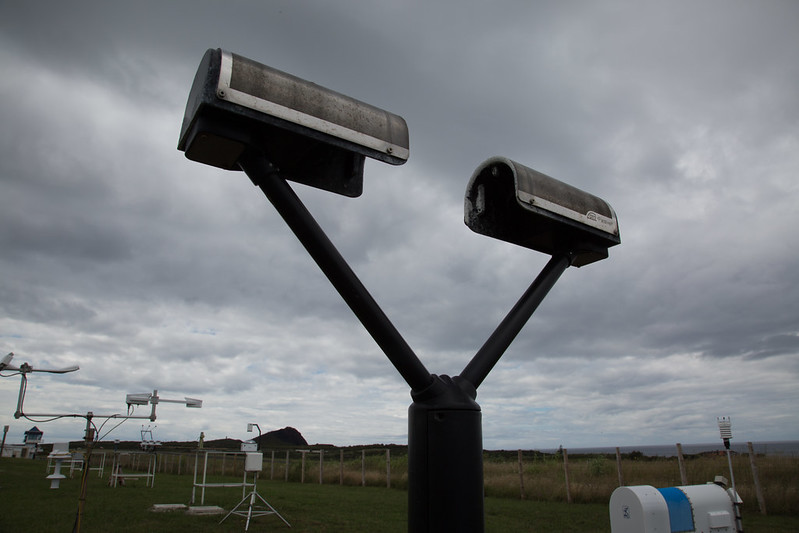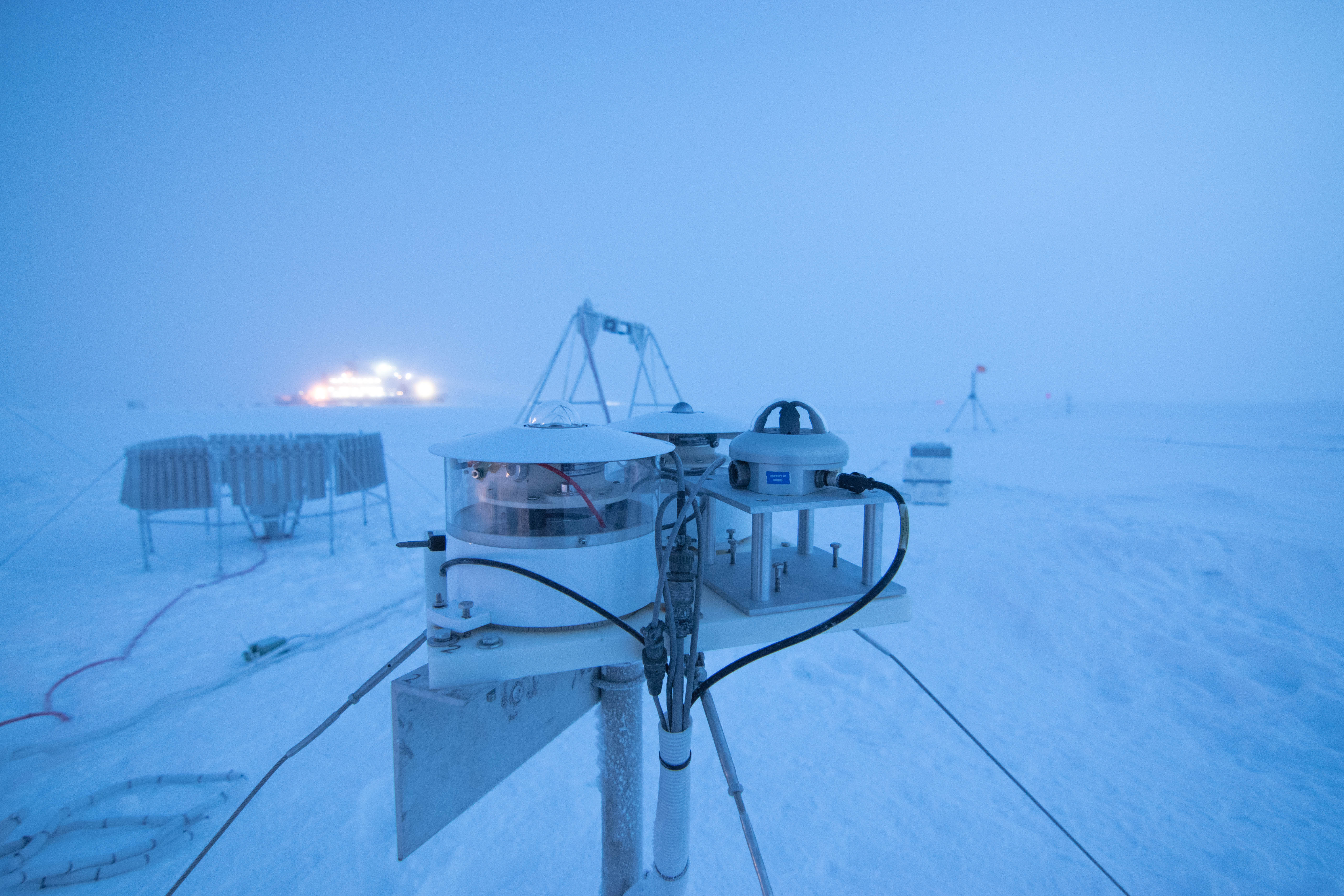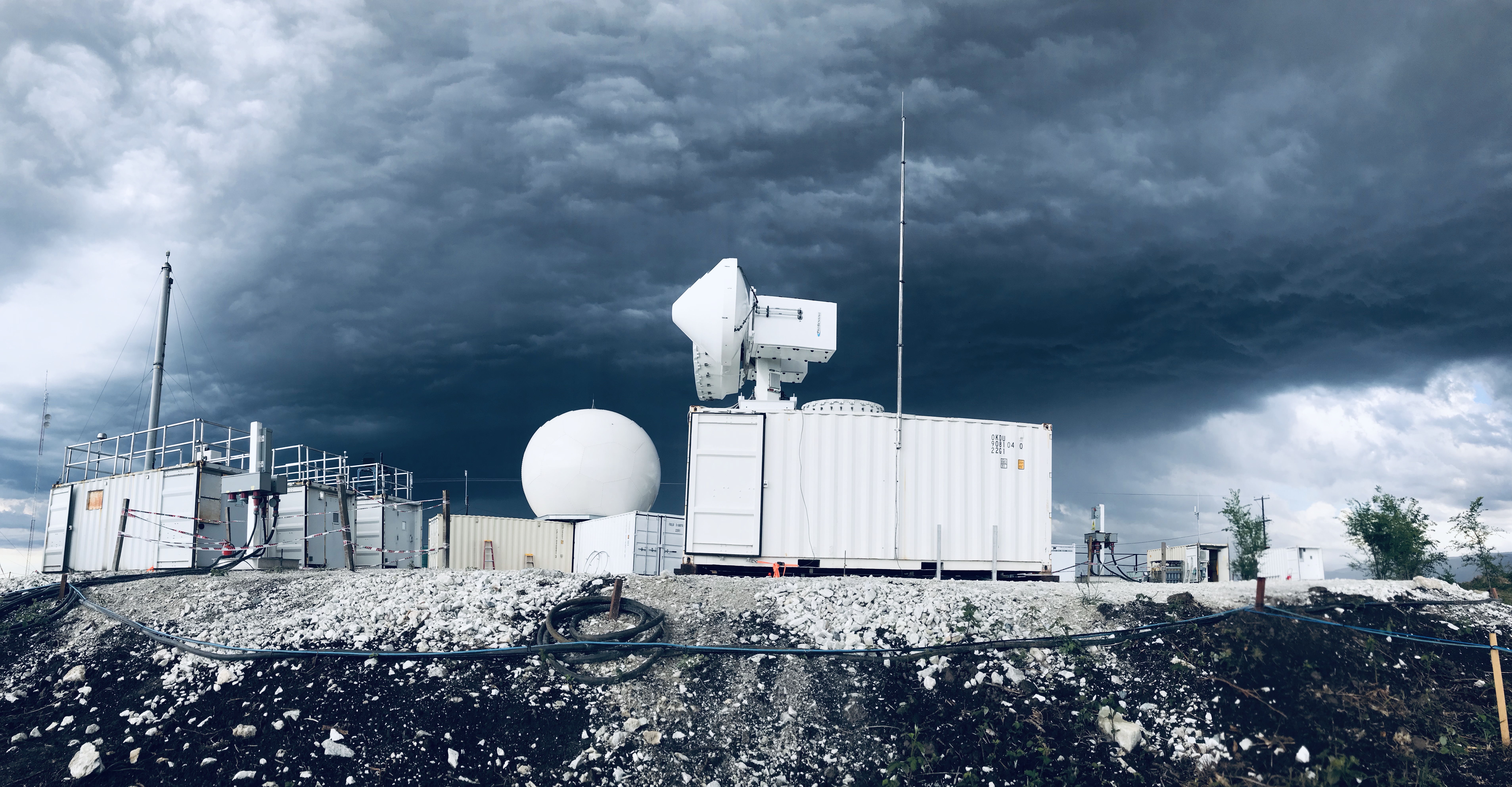ARM Instruments and Data Products Update: Clouds, Radiation, and Precipitation
Published: 24 February 2022
Editor’s note: This is an update from ARM Engineering and Process Manager Jennifer Comstock, who also oversees ARM science products.

Upgrading instruments and data products is an important activity for ARM to keep measurements current and up to date.
ARM has been updating cloud and radiation instruments over the last several years. The multifilter rotating shadowband radiometers (MFRSRs), multifilter radiometers, and normal incidence multifilter radiometers for all fixed-location sites and mobile facilities are now equipped with an additional channel in the near-infrared spectral range at 1625 nm wavelength.
Data from these instruments are used to derive column-integrated properties such as aerosol optical depth (AOD), cloud optical depth (COD), and surface albedo.
The 1625 nm channel helps constrain the size distribution of large aerosol particles, resulting in more accurate aerosol property retrievals. The new channel helps improve COD and particle size retrievals, and it extends surface spectral albedo measurements to better characterize vegetation with strong spectral dependence across the visible and near-infrared wavelengths.

The MFRSR Langley value-added product (VAP), which provides input to higher-level VAPs, is now updated to incorporate the 1625 nm channel. Related updates are underway for the AOD VAP derived from MFRSR measurements (AOD-MFRSR), and ARM plans to complete an update of the Surface Spectral Albedo (SURFSPECALB) VAP in fiscal year 2022 (FY2022). SURFSPECALB provides a near-continuous best estimate of spectral albedo using measurements from multifilter radiometers.
In FY2022, ARM will continue its surface radiometer system upgrades, including the ongoing replacement of the Cimel sun photometers. In addition, ARM will start to replace the broadband shortwave hemispheric and direct normal radiometers at the Southern Great Plains (SGP) Central Facility, Eastern North Atlantic (ENA) and North Slope of Alaska (NSA) observatories, and the three ARM Mobile Facilities.
Efforts are underway to replace inoperable 3-channel microwave radiometers and aging radar wind profilers, Doppler lidars, and total sky imagers.
ARM also is replacing atmospheric emitted radiance interferometers (AERIs) with new models. ARM ordered the last of the replacement AERIs in FY2021, and it is expected to arrive in spring 2022.
Many of these instruments are over 10 years old and reaching their end of life. Instrument replacements will continue into FY2023.
Precipitation
Precipitation is a key component of the hydrological cycle, and measurements of liquid and solid precipitation are important for understanding what controls cloud and precipitation processes. ARM is in the process of improving its measurements and data products for liquid and frozen precipitation.

The nine snow depth sensors at the NSA are being upgraded to add heating elements that will reduce riming effects on the sensors.
Precipitation measurements from the now-inactive ARM site at Oliktok Point, Alaska, will move to a new NSA extended facility in Utqiaġvik (formerly Barrow), potentially located at the Barrow Environmental Observatory. A few miles inland, this new site will help characterize the variability of snow properties across the region.
For the upcoming Southeastern U.S. deployment of the third ARM Mobile Facility (AMF3), ARM is enhancing surface precipitation measurements to better characterize convective systems that frequently occur in the region. ARM purchased additional optical rain gauge and weighing bucket sensors to equip the main Southeastern U.S. site. The site will include a laser disdrometer and a new 2-dimensional video disdrometer to help characterize the raindrop size distribution.
To enhance these precipitation measurements, the Laser Disdrometer Quantities (LDQUANTS) and Video Disdrometer Quantities (VDISQUANTS) VAPs provide calculated radar-equivalent quantities such as radar reflectivity and differential reflectivity. LDQUANTS and VDISQUANTS are now available for the ENA, several SGP locations, and some ARM Mobile Facility deployments. These data products and measurements are key for interpreting and characterizing precipitation radar and rain gauge measurements and evaluating models.
High-Latitude Focus

In high-latitude regions, measurements help researchers understand the rapidly changing environment, but they are difficult to obtain because of the remote locations and harsh weather conditions.
In addition to the long-term measurements from the NSA and extended AMF3 deployment at Oliktok Point, ARM now has a set of core VAPs available for four high-latitude field campaigns spanning 2015 to 2020.
Microwave Radiometer Retrievals (MWRRET), Interpolated Sonde (INTERPSONDE), and Micropulse Lidar Cloud Mask (MPLCMASK) are among the core VAPs now available for the following campaigns:
- Measurements of Aerosols, Radiation, and Clouds over the Southern Ocean (MARCUS)
- the ARM West Antarctic Radiation Experiment (AWARE)
- the Cold-Air Outbreaks in the Marine Boundary Layer Experiment (COMBLE)
- the Multidisciplinary Drifting Observatory for the Study of Arctic Climate (MOSAiC) expedition.
In addition, core VAPs from the Active Remote Sensing of CLouds (ARSCL) suite are available from all four campaigns. For AWARE, COMBLE, and MOSAiC, moments from the Ka-Band ARM Zenith Radar (KAZR) and co-located measurements are merged in the KAZRARSCL product. For MARCUS, observations from the marine version of the 95 GHz W-Band ARM Cloud Radar (WACR) and other ARM instruments are combined in the WACRARSCL product.
MARCUS and MOSAiC data sets also include the Aerosol Optical Properties (AOP) VAP.
Data Quality Assessment for ARM Radiation Data (QCRAD), Radiative Flux Analysis (RADFLUXANAL), and ARM Best Estimate (ARMBE) products for cloud and radiation quantities (ARMBECLDRAD) and basic atmospheric quantities (ARMBEATM) are now available for AWARE and COMBLE.
There are plans to add the Atmospheric Emitted Radiance Interferometer Optimal Estimation (AERIOE) VAP for MARCUS, AWARE, and the NSA in FY2022. AERIOE provides thermodynamic profile and cloud retrievals using the optimal estimation approach.
Radars

Since the implementation of the yearly radar plan in 2017, the ARM radar mentors have focused attention on a specific set of radars each year. (See the FY2022 plan here.) They also developed routine calibration procedures that have helped improve radar performance and quality.
As a result, new corrected, calibrated b-level products, which provide input to several VAPs, are now available. Radar VAPs that use b-level data as input include KAZRARSCL, Scanning ARM Cloud Radar Grid (SACRGRID) products, and C-band radar corrected moments (CMAC2) from the Cloud, Aerosol, and Complex Terrain Interactions (CACTI) campaign in Argentina.
SACR and KAZR b-level products are in the final stages of review before release in early FY2022. MOSAiC b-level data and VAPs will be available from the KAZR, Marine W-Band ARM Cloud Radar, and Ka-Band Scanning ARM Cloud Radar later in FY2022.
Look for these blogs coming soon: aerosol instruments and data products, and products for modelers. All ARM data are freely available to download and order from Data Discovery.
Keep up with the Atmospheric Observer
Updates on ARM news, events, and opportunities delivered to your inbox
ARM User Profile
ARM welcomes users from all institutions and nations. A free ARM user account is needed to access ARM data.


















